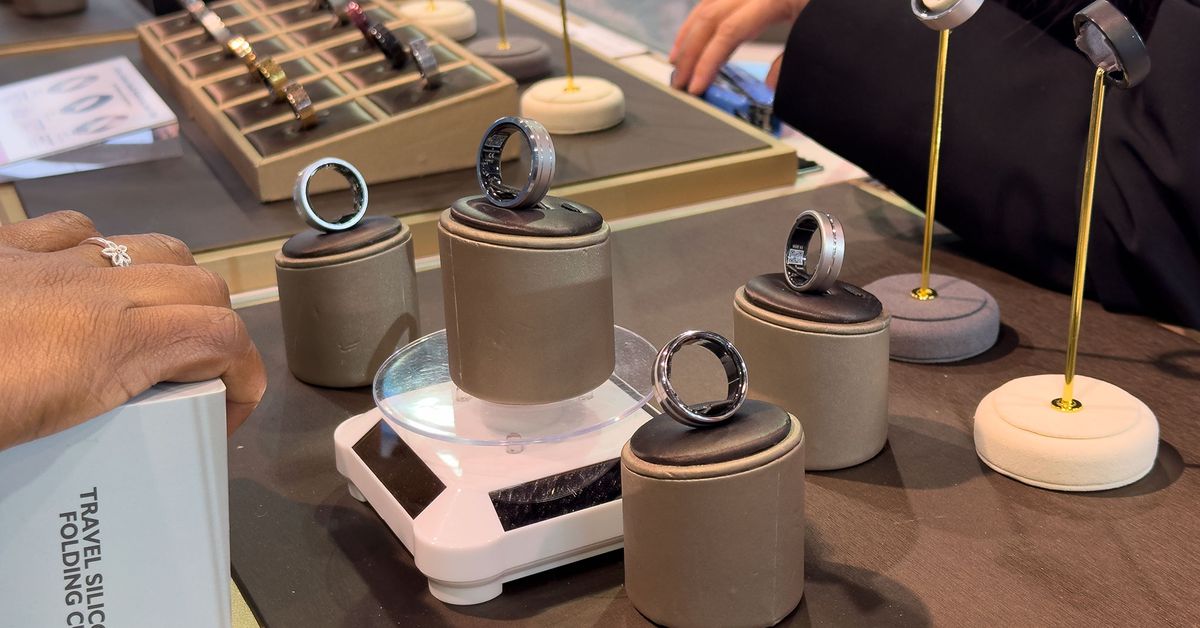
For the past few years, the Oura Ring has been the most recognizable smart ring on the market. After what I saw on the CES show floor, it’s about to get some real competition.
The smart ring is a promising form factor, but it’s tricky to get right. It’s more discreet and comfortable for sleep tracking than a smartwatch. The underside of your finger is also a better place to take heart rate and blood oxygen readings than your wrist. The downside is that it’s challenging to create a device that’s stylish given how small and flexible the components need to be. Plus, they tend to be pricey, with fewer features than a smartwatch.
There are all reasons why I was surprised to see several working prototypes and products at CES. I genuinely can’t remember the last time that happened.
The closest to launch is Movano’s Evie Ring. It first showed up at CES in 2022, and I’ve since watched it evolve from a concept to a bona fide product that will launch later this month. It’ll cost $269 and was designed to be a women-first wearable. (Though the company has told me multiple times that anyone can wear one if they want.) It’ll feature a simplified app that contextualizes data, while tracking health metrics like blood oxygen, heart rate, activity, and menstrual cycles. The goal is to eventually incorporate AI-powered insights. It looks nice and features a clever design that allows the ring to flex when your fingers are swollen.
That sounds an awful lot like what the Oura Ring does and then some. Plus, Movano is taking the extra step to get FDA clearance for the device. Not because the included features require it, but because it wants to show customers just how much care has gone into ensuring the accuracy of the sensors.
It’s not just the Evie Ring, either. I also saw a prototype of the Amazfit Helio Ring. This smart ring is geared toward athletes who want greater insight into recovery. Again, a familiar premise as the Oura Ring is also a recovery tracker. It includes a daily readiness score and the ability to use it with other Amazfit smartwatches. Meaning, you could wear the smartwatch during the day and safely take it off when it’s time for bed, knowing the ring will take care of sleep tracking. Plus, it has an EDA sensor to track stress and access to an AI chatbot.
The other thing about Amazfit: it makes impressive budget wearables. I’ve tested several of its devices over the years and have been flabbergasted at how many features you get for the price. Case in point, the $200 Amazfit GTR 4 is our current pick for best overall fitness tracker. The Helio Ring doesn’t have a price yet, but judging by every other Amazfit product? When it arrives this spring, it’ll be competitively priced.
Those are just the two that I find most compelling. I saw plenty others, some of which were more niche or made dubious health tracking claims. Another that stood out was the Zikr Ring — a smart ring for Muslims. The ring provides five daily reminders when it’s time to pray and has a digital tasbih counter. There was also RingConn, yet another smart ring with similar features to the Oura Ring for a slightly more affordable price. (Albeit from a less proven company.) There were more, but at a certain point the rest started to blend together.
Granted, smart rings never completely went away. The Motiv Ring may have crashed and burned, but smaller companies like Ultrahuman and Circular have been tinkering away for a while now. Samsung is also rumored to be working on a Galaxy Ring. It’s more that seeing so many smart rings in one place hammered home that this space is picking up momentum. It’s only a matter of time before a smart ring meaningfully challenges Oura’s dominance. And you know what? It’s not even a matter of besting the Oura Ring. It’s more that this space has been too quiet for far too long — and a lil competition might just be what it needs to push forward.






